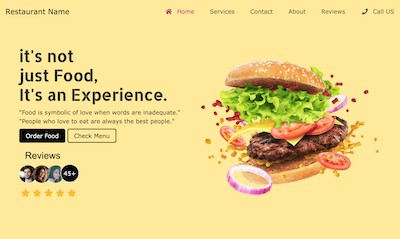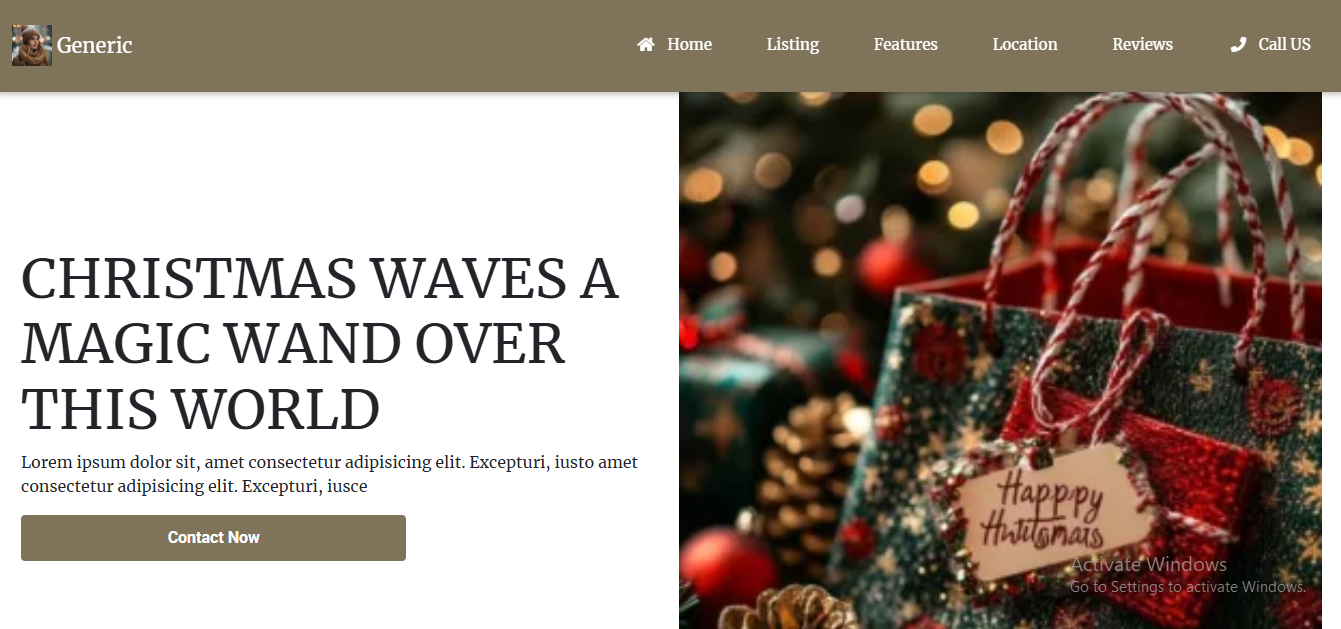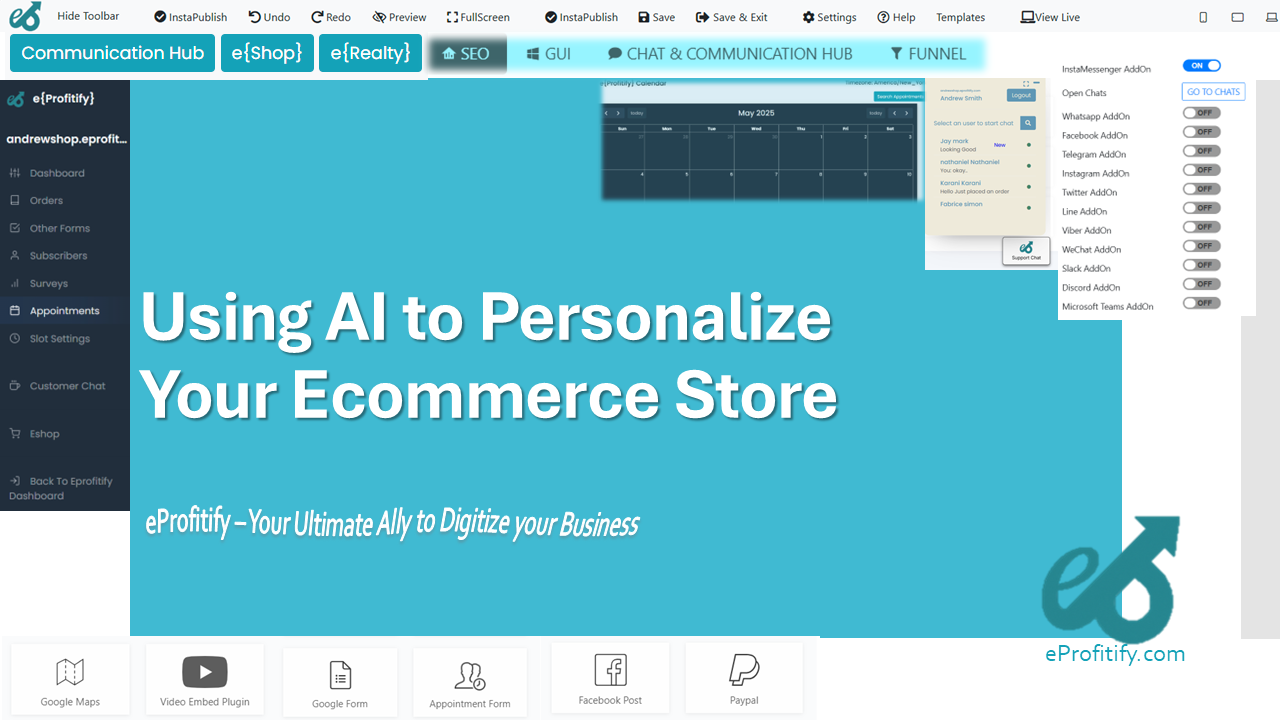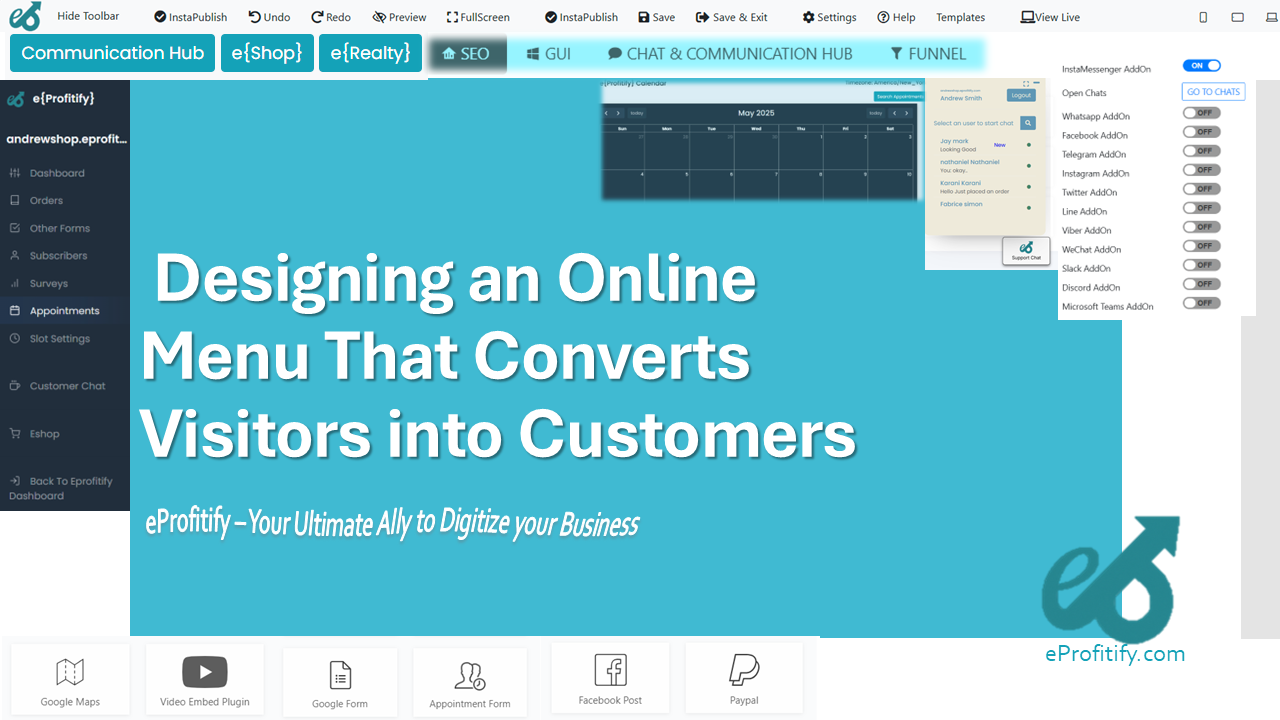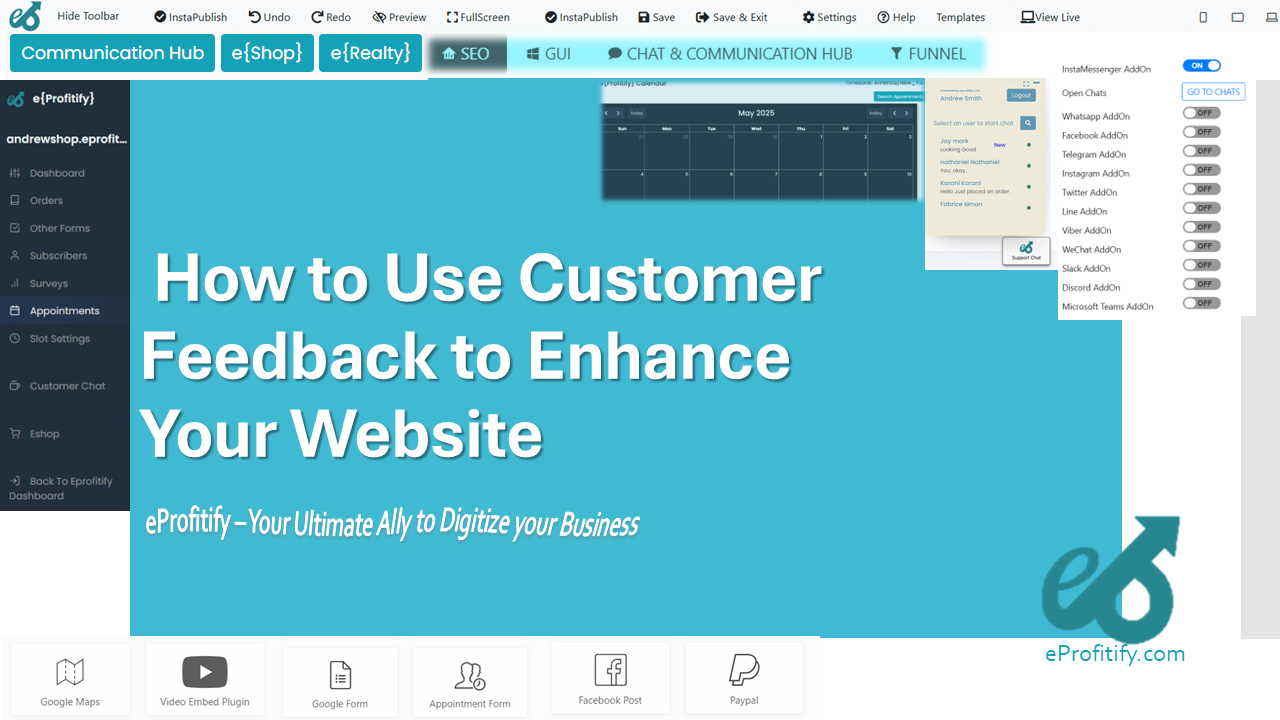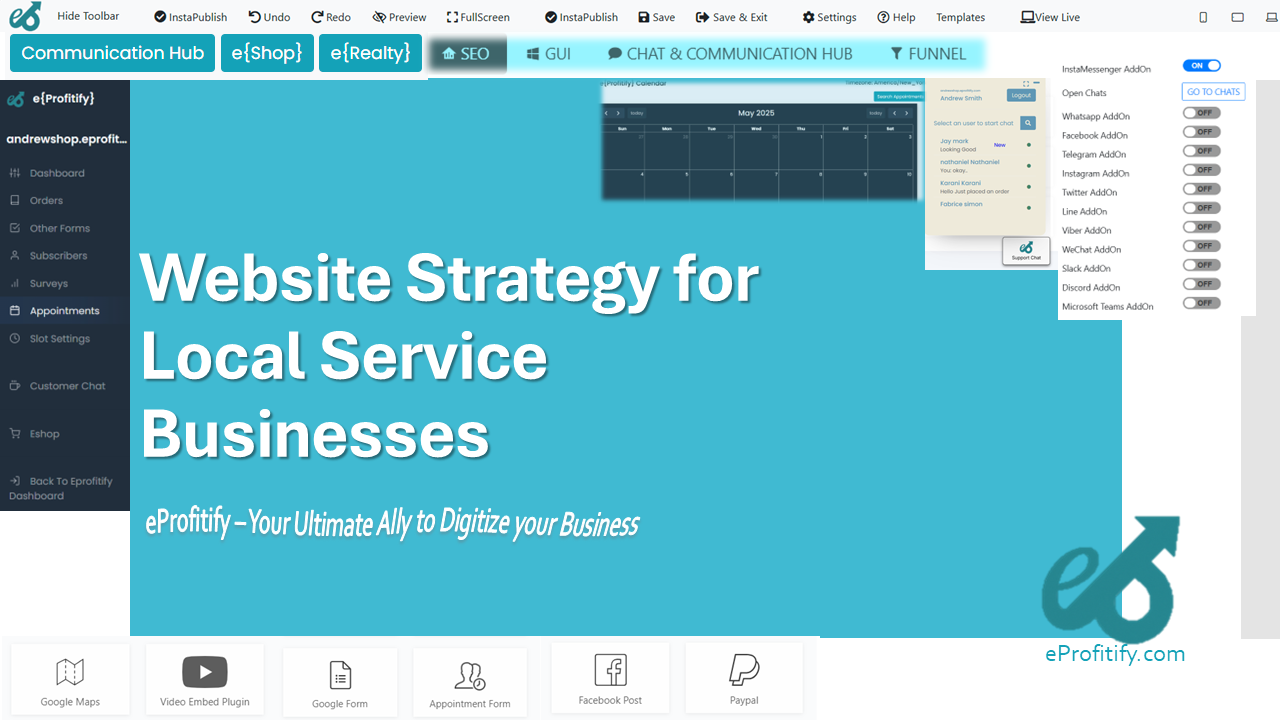How to Use Menu Descriptions to Increase Sales
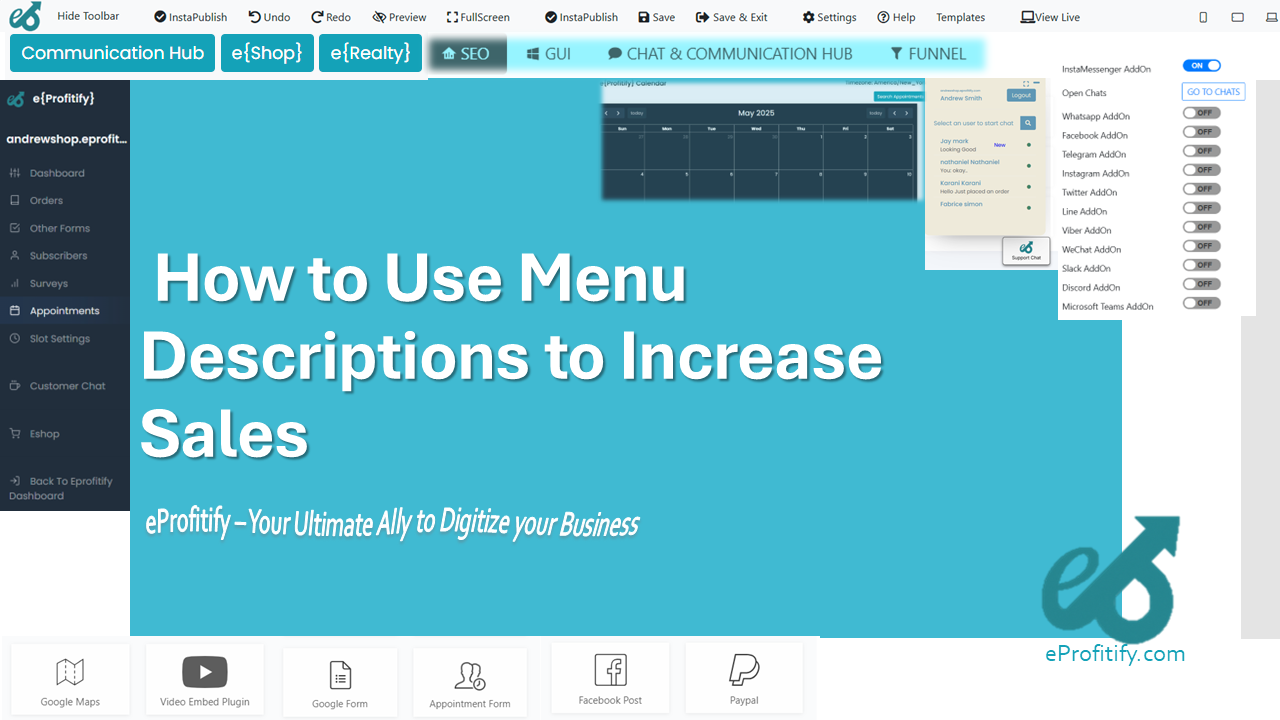
How to Use Menu Descriptions to Increase Sales (And How Eprofitify Helps You Do It)
Menu descriptions are far more than a list of dishes—they are a strategic tool to influence customer decisions, enhance dining experiences, and significantly boost sales. In the competitive food and hospitality industry, how you present your offerings can determine whether a customer orders a $10 appetizer or splurges on a $30 entrée. This article explores data-backed strategies to optimize your menu descriptions, alongside highlighting how Eprofitify—a leading website publishing and management platform—can streamline these efforts with tools like instant messaging, CRM, and ecommerce integration.
The Power of Menu Psychology: Why Descriptions Matter
Studies show that 27% of diners are more likely to order a dish with a descriptive label compared to a basic one (Cornell University). Well-crafted descriptions don’t just inform—they evoke emotions, build anticipation, and justify pricing. For example, “homemade chocolate cake” underperforms compared to “warm, flourless chocolate lava cake topped with house-made vanilla bean gelato,” which increases perceived value and willingness to pay.
Key Statistics:
- Menus using sensory words (e.g., “crispy,” “savory,” “velvety”) see 12% higher sales (Journal of Sensory Studies).
- 65% of diners are influenced by nostalgic or story-driven descriptions (Technomic).
- Restaurants that highlight local or sustainable ingredients achieve 15% higher profit margins (National Restaurant Association).
5 Proven Strategies to Optimize Menu Descriptions
1. Use Sensory and Emotional Language
Words that engage the senses (e.g., “sizzling,” “aromatic,” “smoked”) activate the brain’s pleasure centers. The FAAVC framework is effective:
- Food: Name the dish.
- Adjective: Describe its quality (e.g., “grass-fed,” “organic”).
- Appeal: Add sensory appeal (“slow-roasted,” “crisp”).
- Variety: Mention ingredients or preparation.
- Customization: Offer add-ons (e.g., “add truffle fries for $3”).
Example:
Basic: “Cheeseburger and fries.”
Optimized: “Juicy, grass-fed beef patty with melted aged cheddar, caramelized onions, and hand-cut truffle parmesan fries.”
2. Incorporate Storytelling
Tying dishes to a narrative builds emotional connections. A study by Stanford University found that brands using storytelling see a 20% higher customer retention rate. For example:
- “Grandma’s Secret Recipe: A hearty chili simmered for 8 hours with locally sourced beef and heirloom tomatoes, just like our founder’s grandmother made in 1942.”
3. Design for the “Golden Triangle”
Customers’ eyes typically scan menus in a Z-pattern, focusing first on the center-top section—the “golden triangle.” Place high-margin items here and use design elements like borders or icons to draw attention. According to MenuMate, this tactic increases sales of targeted dishes by 30%.
4. Utilize Psychological Pricing
Avoid dollar signs ($), which remind customers of spending. Researchers found that menus without currency symbols see 8% higher spending (NYU). Instead of $15, write “15” or use phrases like “Market Price” for premium items.
5. Highlight Customization and Upselling Opportunities
Offering upgrades (e.g., “Add shrimp for $5”) or pairing suggestions (“Try our Cabernet Sauvignon with this dish”) can increase average order value by 10–15%, according to Upserve.
How Eprofitify Enhances Menu Management and Sales Growth
While crafting enticing descriptions is critical, executing these strategies efficiently requires the right tools. Eprofitify, a comprehensive website publishing and management platform, empowers restaurants and food businesses to streamline operations while maximizing sales through innovative features:
1. Dynamic Menu Management
Eprofitify’s user-friendly interface allows instant updates to digital menus across websites and third-party delivery platforms. For example, during peak hours, you can highlight high-margin “Chef’s Specials” using bold fonts or animations. Analytics tools track which items perform best, helping you refine descriptions in real time.
2. Integrated Customer Relationship Management (CRM)
Eprofitify’s CRM system tracks customer preferences and order history. If a diner frequently orders vegetarian dishes, your menu can automatically display plant-based options with tailored descriptions like “Creamy vegan coconut curry—our regulars’ favorite!” Personalized marketing campaigns driven by this data boost repeat visits by 25%.
3. Instant Messaging for Real-Time Engagement
Customers often have questions about ingredients or preparation. Eprofitify’s instant messaging feature lets staff respond immediately, reducing abandoned orders. For example:
- Customer: “Is the gluten-free pasta vegan?”
- Staff: “Yes! Our quinoa pasta is 100% plant-based, served with seasonal veggies and a sun-dried tomato sauce.”
4. Appointment Management and Online Ordering
For businesses offering catering or chef’s table experiences, Eprofitify’s appointment management system syncs reservations with menu promotions. A pop-up could say, “Book our Valentine’s Day dinner and enjoy a complimentary chocolate fondue!” Meanwhile, integrated ecommerce tools enable seamless online ordering directly from the menu.
5. Data-Driven Decisions
Eprofitify’s dashboards provide insights into popular dishes, peak ordering times, and customer feedback. If data shows that “spicy” dishes sell poorly, you can tweak descriptions to emphasize milder options or create combo deals.
Case Study: A bakery using Eprofitify redesigned its menu to highlight “Locally Sourced Organic Blueberry Muffins” and used CRM data to target health-conscious customers. Online sales rose by 35% in three months.
Final Tips to Amplify Menu Success
- Add High-Quality Photos: Dishes with images receive 30% more orders (OpenTable).
- Rotate Seasonal Items: Limited-time offers create urgency.
- Test and Optimize: Use A/B testing to compare descriptive styles.
Conclusion
Strategic menu descriptions are a game-changer for sales, but their impact multiplies when paired with tools like Eprofitify. By combining psychologically optimized text with dynamic website management, CRM, and real-time customer engagement, businesses can create compelling dining journeys that drive loyalty and revenue.
Eprofitify isn’t just a platform—it’s a growth partner. From menu updates to automated upselling, its all-in-one solution ensures your culinary storytelling translates into tangible profits. Visit Eprofitify to explore how its features can transform your business today.
Word Count: 1,000
